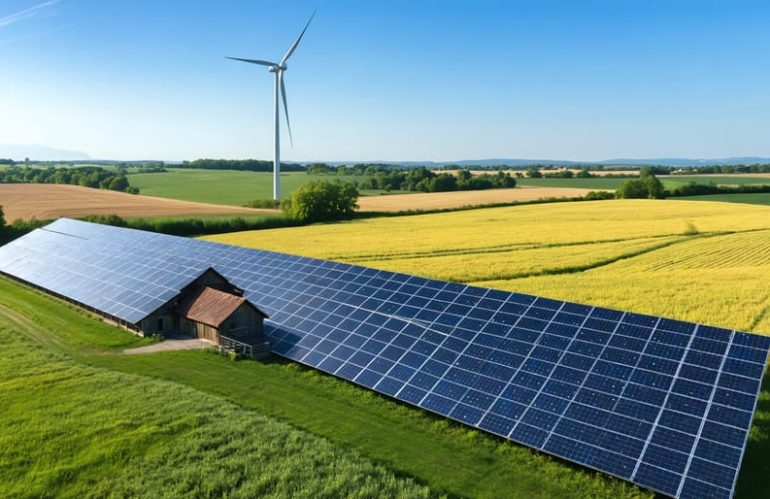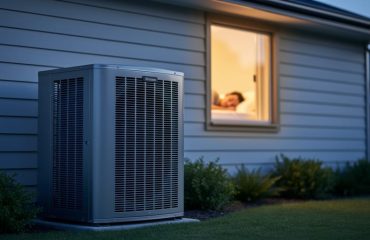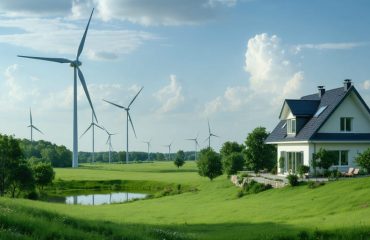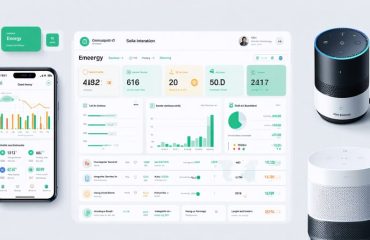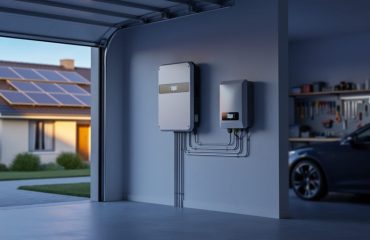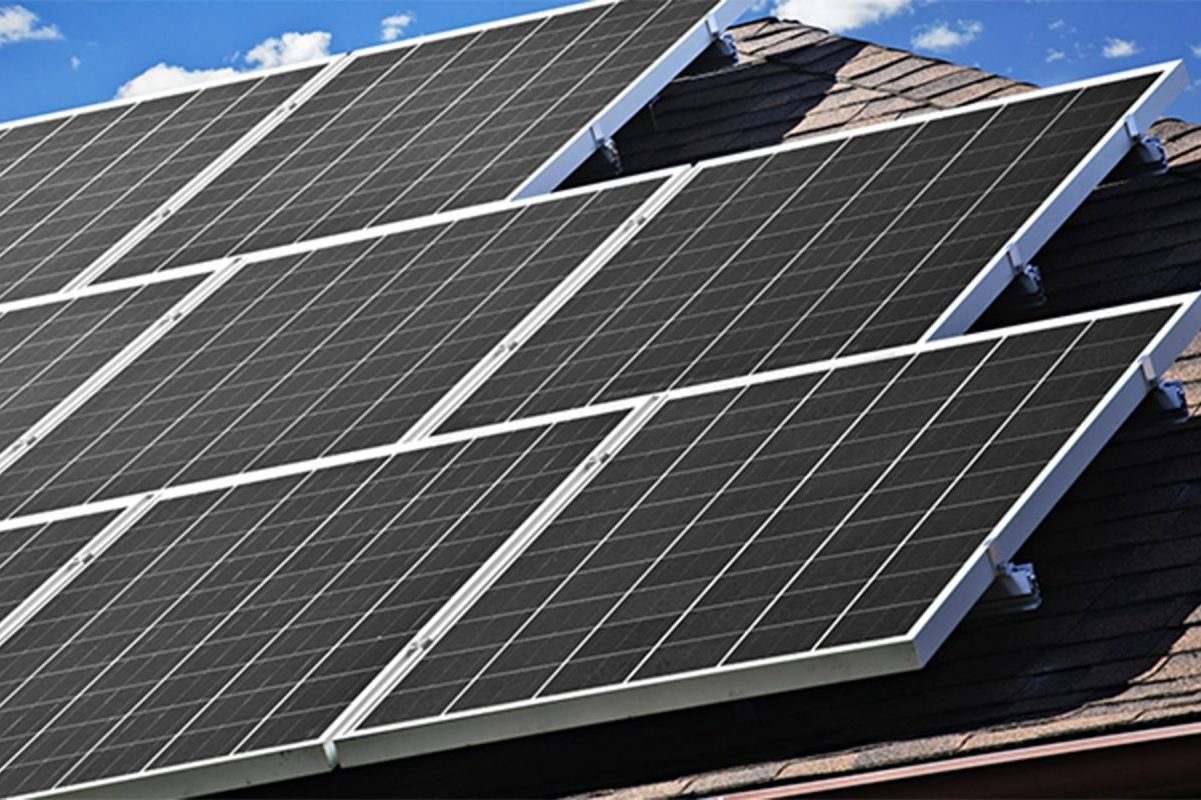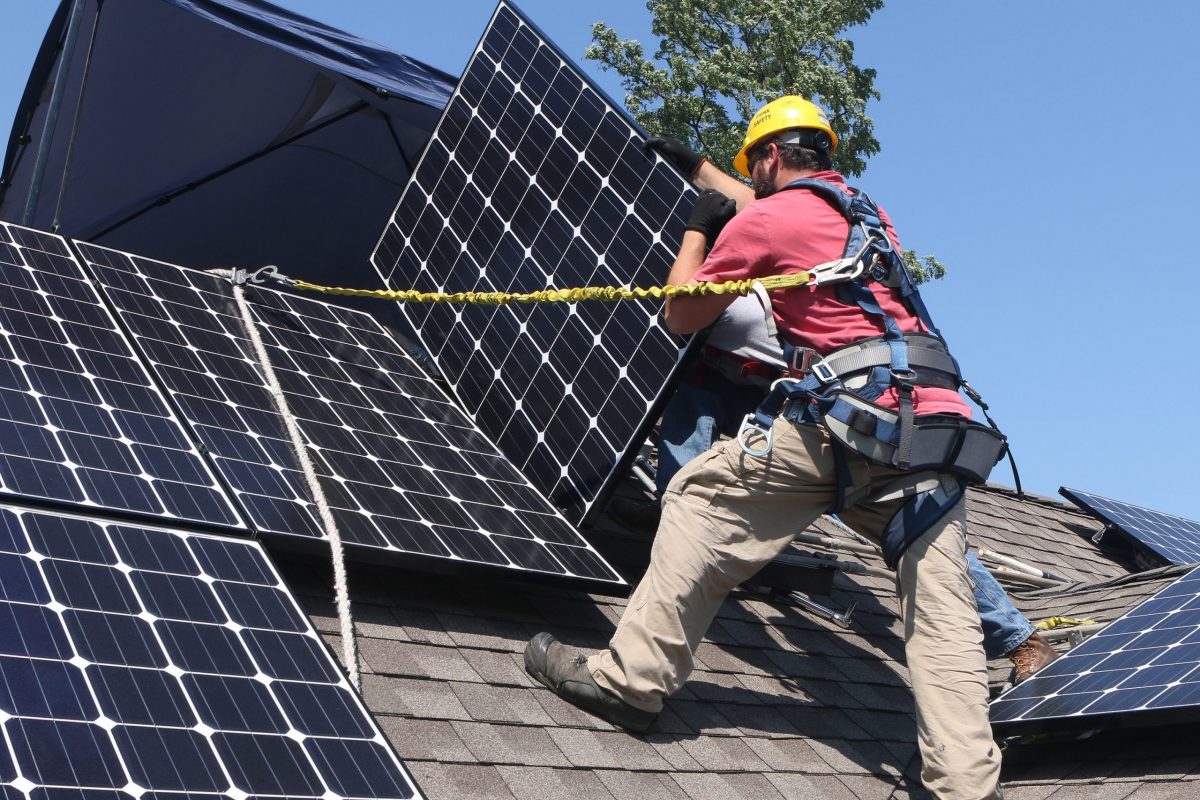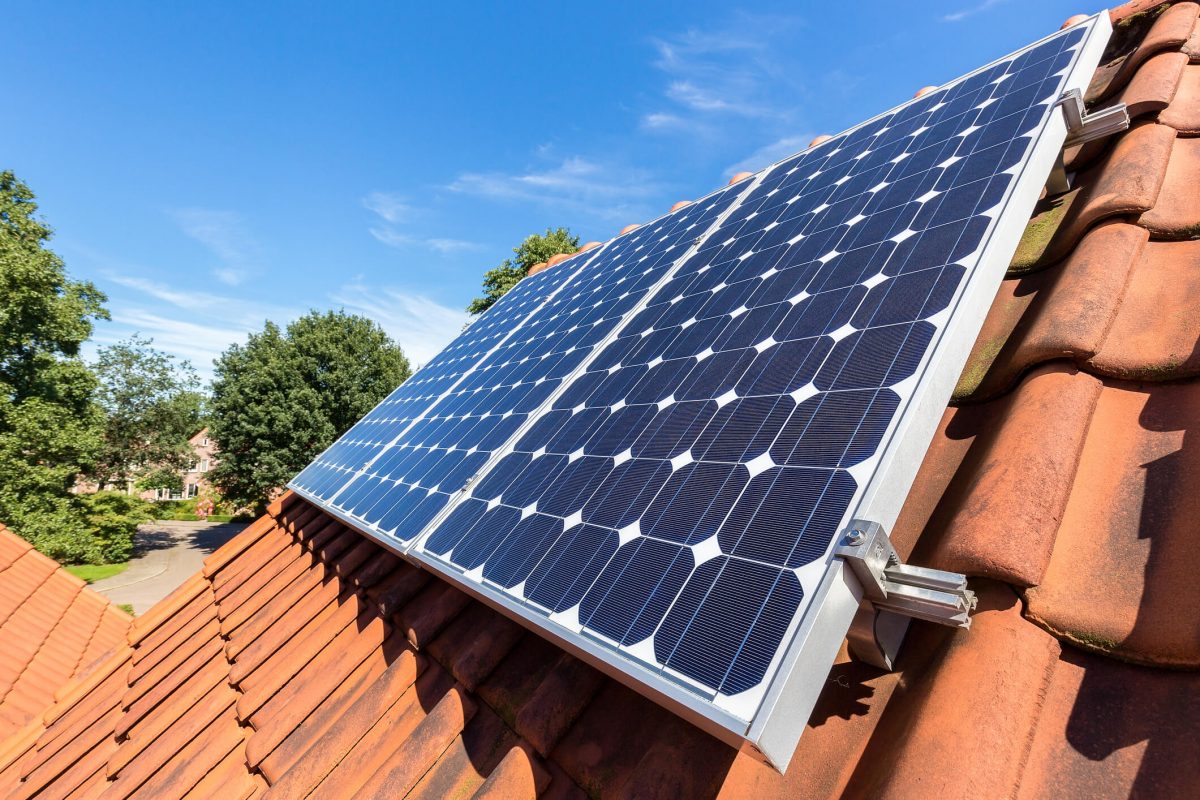Renewable energy is transforming rural landscapes across America, offering a powerful solution to both environmental sustainability and economic independence. As energy costs continue to rise, rural communities are discovering unique advantages in their geographical settings – from abundant open spaces for solar arrays to steady winds for turbines and ample biomass resources from agricultural operations.
Rural areas possess natural characteristics that make them ideal candidates for renewable energy adoption. Wide-open spaces provide optimal conditions for solar and wind installations without the space constraints found in urban environments. Additionally, agricultural operations can generate significant biomass resources, creating opportunities for sustainable energy production right from the farm.
The shift toward renewable energy in rural settings isn’t just about environmental stewardship – it’s about economic resilience. Many rural communities are reducing their dependence on traditional power grids while creating new revenue streams through energy production. Farmers are discovering that solar panels and wind turbines can become valuable “energy crops,” providing steady income alongside traditional agricultural activities.
Whether you’re a rural homeowner looking to cut utility costs or a farmer interested in diversifying your income streams, renewable energy offers practical, sustainable solutions tailored to rural life. The technology is proven, the benefits are clear, and the time for rural renewable energy adoption has never been better.
Why Rural Areas Are Perfect for Renewable Energy
Space and Solar Potential
Rural properties offer an unmatched advantage when it comes to solar energy potential: abundant space. Unlike urban settings, rural homes typically have larger land areas and fewer shade-casting obstacles, creating ideal conditions for solar panel installations. This extra space allows homeowners to optimize panel placement for maximum sun exposure throughout the day.
The generous land availability means rural property owners can install ground-mounted solar arrays, which are often more efficient than roof installations. These systems can be precisely angled and oriented to capture optimal sunlight, and they’re easier to maintain and clean. Additionally, larger properties provide flexibility in system sizing, allowing homeowners to install enough panels to meet their entire energy needs or even generate surplus power.
Rural areas also typically have fewer zoning restrictions and homeowner association rules governing solar installations. This freedom, combined with wide-open spaces, makes it possible to implement larger-scale solar projects that can power not just homes but also agricultural operations, workshops, and other rural business activities.
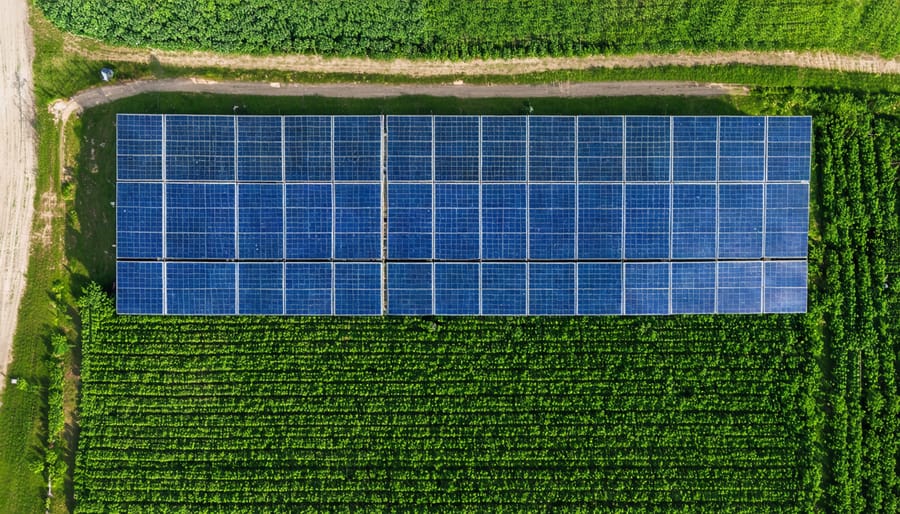
Wind Power Opportunities
Rural areas offer exceptional potential for harnessing wind energy, thanks to their vast open spaces and typically higher average wind speeds. Modern wind power solutions for homes have become increasingly efficient and affordable, making them an attractive option for rural property owners.
The advantages of rural wind power are significant. A single residential turbine can generate enough electricity to power an entire household, with excess energy often available to sell back to the grid. Unlike urban settings, rural properties rarely face zoning restrictions or height limitations that might impede turbine installation.
Small-scale wind systems typically require average wind speeds of at least 10 mph to be effective, a condition many rural areas naturally meet. Modern turbines are also quieter and more wildlife-friendly than earlier models, addressing common concerns about noise and environmental impact.
For rural homeowners, wind power can provide energy independence, lower utility bills, and protection against rising electricity costs. With federal tax incentives and state-level programs available, the initial investment can often be recovered within 5-10 years.
Smart Solutions for Off-Grid Living
Solar Panel Systems That Work Anywhere
Modern solar panel systems have evolved to become incredibly versatile, making them an excellent choice for rural properties regardless of location or climate. Thanks to advances in technology, today’s solar solutions can generate meaningful power even in areas with less-than-ideal sun exposure or challenging weather conditions.
Off-grid solar systems are particularly well-suited for remote locations, combining panels with battery storage to ensure reliable power supply throughout the day and night. These systems can be scaled to meet various energy needs, from powering a small cabin to supporting a full-sized farmhouse with multiple outbuildings.
Ground-mounted arrays offer an excellent alternative when roof installation isn’t practical, allowing optimal positioning for maximum sun exposure. These systems can be installed on any relatively flat surface and are easier to maintain than roof-mounted panels. For properties with limited space, dual-use solutions like solar carports or pergolas provide both energy generation and practical functionality.
Modern solar panels are also more durable than ever, designed to withstand extreme weather conditions including heavy snow loads, high winds, and hail. Most systems come with comprehensive warranties of 25 years or more, ensuring long-term reliability and peace of mind.
Even in areas with frequent cloudy days, high-efficiency panels can still generate significant power, while micro-inverter technology helps maximize energy production from each individual panel. This means that even partial shade or occasional cloud cover won’t severely impact your system’s overall performance.
Energy Storage Solutions
Energy storage is a crucial component of any renewable energy system, especially in rural areas where grid connectivity might be unreliable. Modern battery systems have become more affordable and efficient, making them an excellent investment for rural homeowners looking to maximize their energy independence.
The most popular storage option is lithium-ion batteries, which offer excellent performance and longevity. These systems can store excess energy generated during sunny or windy periods for use during nighttime or calm conditions. A typical home battery system can store enough energy to power essential appliances for 24-48 hours, providing peace of mind during outages.
For rural properties, hybrid systems combining batteries with backup generators offer comprehensive protection against power interruptions. Smart battery management systems automatically regulate charging and discharging cycles, maximizing battery life and efficiency. Many modern systems also include user-friendly apps that allow homeowners to monitor energy usage and storage levels from their smartphones.
Alternative storage solutions include flow batteries and saltwater batteries, which are particularly well-suited for rural applications due to their long life spans and minimal maintenance requirements. Some innovative homeowners are even combining multiple storage technologies to create customized solutions that match their specific needs and energy consumption patterns.
When selecting a storage system, consider factors like daily energy usage, peak power requirements, and backup duration needs. Many suppliers now offer scalable solutions that can grow with your energy needs over time.
Hybrid Systems for Reliable Power
In rural areas, relying on a single renewable energy source can sometimes be challenging due to varying weather conditions and seasonal changes. That’s why hybrid systems, which combine multiple renewable energy sources, are becoming increasingly popular. These systems typically integrate solar panels with wind turbines, and often include battery storage solutions for maximum reliability.
A well-designed hybrid system might use solar panels as the primary power source during sunny days, while wind turbines generate electricity during nighttime hours or cloudy weather. This complementary approach ensures a more consistent power supply throughout the year. When coupled with smart home automation systems, these setups can automatically switch between different power sources to maximize efficiency.
Battery storage plays a crucial role in hybrid systems, storing excess energy for use during low-production periods. Modern battery technologies have become more affordable and efficient, making them an essential component of reliable rural power systems. Many homeowners start with a basic solar installation and gradually expand their system to include wind power or micro-hydro solutions where available.
The beauty of hybrid systems lies in their adaptability – they can be customized based on your location’s specific resources and energy needs. While the initial investment might be higher than single-source solutions, the improved reliability and energy independence make hybrid systems an excellent long-term choice for rural homeowners.
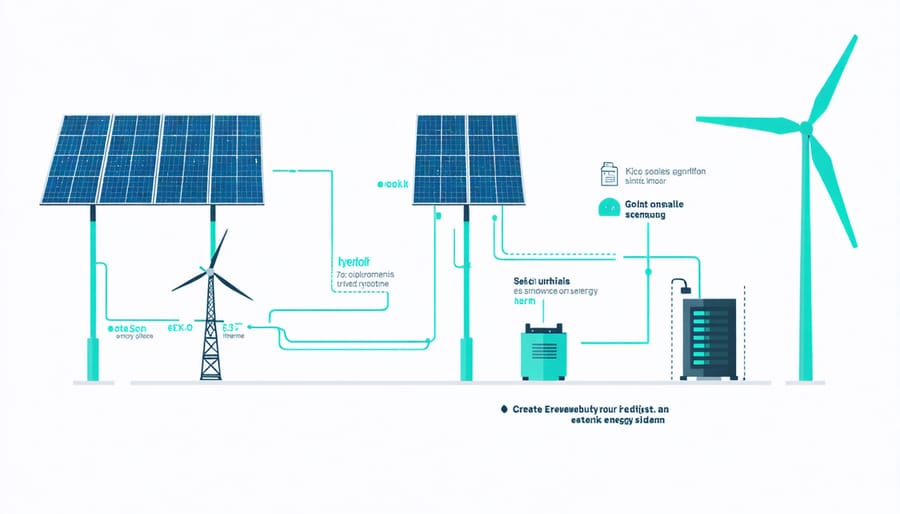
Cost Benefits for Rural Homeowners
Long-Term Savings vs. Grid Extension
When comparing long-term costs, renewable energy systems often prove more economical than traditional grid extension in rural areas. While the initial investment in solar panels or wind turbines may seem substantial, these systems typically pay for themselves within 5-10 years through energy savings and require minimal maintenance thereafter.
Grid extension costs in rural areas can range from $15,000 to $50,000 per mile, depending on terrain and accessibility. These expenses often fall on the property owner, making renewable alternatives increasingly attractive. Additionally, traditional power lines require ongoing maintenance and are susceptible to weather-related outages, leading to unexpected repair costs.
In contrast, modern renewable systems offer predictable expenses and greater energy independence. When you reduce your energy consumption through efficient appliances and smart usage habits, the initial system size requirements decrease, further lowering upfront costs.
Many rural homeowners find that combining solar panels with battery storage provides reliable power while eliminating monthly utility bills. Federal tax incentives, state rebates, and rural energy grants can significantly offset installation costs, making the switch to renewables even more financially attractive. This investment not only provides energy independence but also increases property value, offering multiple pathways to long-term savings.
Available Rural Energy Incentives
Rural property owners can take advantage of numerous financial incentives designed specifically for renewable energy adoption. The USDA’s Rural Energy for America Program (REAP) offers grants covering up to 25% of project costs and loan guarantees for renewable energy systems. These benefits are available to agricultural producers and small rural businesses looking to invest in solar, wind, or biomass energy solutions.
The federal Investment Tax Credit (ITC) allows rural homeowners to deduct 30% of their solar installation costs from their federal taxes, making sustainable energy more affordable. Many states offer additional tax incentives, grants, and rebates specifically for rural renewable energy projects, which can be combined with federal programs for maximum savings.
Net metering policies enable rural residents to sell excess energy back to the grid, creating an additional revenue stream. Some utility companies offer special rural renewable energy rates and incentives, including reduced connection fees and expedited approval processes for grid integration.
Local agricultural cooperatives frequently provide member-specific renewable energy programs, offering lower-cost equipment purchasing and installation services. Property Assessed Clean Energy (PACE) financing allows rural property owners to fund renewable energy improvements through their property taxes, spreading the cost over several years.
To maximize available incentives, rural residents should consult with local energy offices and USDA representatives who can provide guidance on qualifying programs and application processes.
Getting Started with Rural Renewable Energy
Property Assessment
Before investing in renewable energy systems, it’s essential to assess your property’s potential for different sustainable solutions. Start by examining your property’s solar exposure by monitoring sunlight patterns throughout the day and seasons. Note any obstacles like tall trees or buildings that might cast shadows on potential solar panel locations.
Wind energy potential can be evaluated by checking local wind speed data and observing natural indicators like tree growth patterns. Generally, properties on hills or in open areas with consistent winds are ideal for small wind turbines. Consider installing an anemometer for accurate wind speed measurements over several months.
For hydropower possibilities, examine any water sources on your property. Even small streams with consistent flow can be valuable resources. Document water flow rates during different seasons to understand year-round potential.
Your property’s size and topography also matter. Calculate available roof space for solar panels, or measure open land areas suitable for ground-mounted systems. For geothermal systems, assess soil conditions and available space for underground loops.
Consider working with a renewable energy consultant who can conduct a professional site assessment. They can provide detailed analysis of your property’s renewable energy potential and help identify the most cost-effective solutions. Many consultants offer energy audits that include both property assessment and current energy consumption analysis, helping you make informed decisions about which renewable systems will work best for your situation.
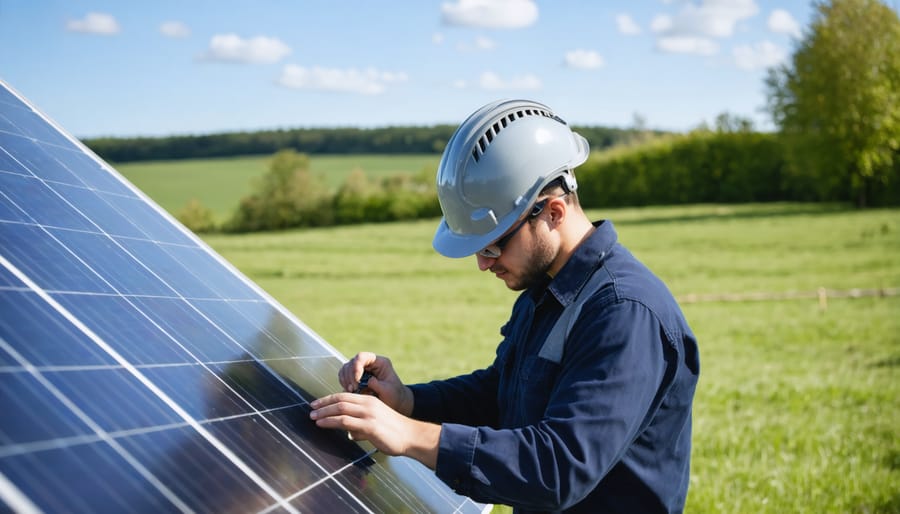
Choosing the Right System
Selecting the right renewable energy system for your rural property requires careful consideration of several key factors. Start by assessing your energy needs through a comprehensive energy audit, which will help you maximize energy efficiency before investing in renewable solutions.
Consider your property’s natural resources: Does your area receive abundant sunlight? Are you located in a consistently windy region? Is there a flowing water source nearby? These factors will help determine whether solar panels, wind turbines, or micro-hydro systems would be most effective for your situation.
Your available space and local zoning regulations also play crucial roles. Solar panels can be installed on rooftops or open ground, while wind turbines require adequate clearance from buildings and trees. Check local building codes and permit requirements before making your final decision.
Budget considerations should include both initial installation costs and long-term maintenance. While solar panels typically have lower maintenance requirements, wind turbines may need more regular upkeep. Consider available incentives, tax credits, and financing options specific to your area.
Finally, think about your future needs. Choose a system that can be expanded if necessary and one that aligns with your long-term sustainability goals. Many homeowners find that a hybrid system, combining two or more renewable sources, provides the most reliable year-round energy solution.
Embracing renewable energy in rural areas offers multiple benefits that extend far beyond environmental impact. From significant cost savings on utility bills to increased energy independence and property value appreciation, sustainable energy solutions provide rural homeowners with powerful advantages. The availability of federal and state incentives, combined with decreasing installation costs, makes now an ideal time to invest in renewable energy systems. Whether you choose solar panels, wind turbines, or biomass solutions, these technologies are becoming more accessible and efficient each year. By taking the first step toward renewable energy adoption, you’ll not only contribute to a cleaner environment but also secure a more sustainable and economically sound future for your rural property. Consider reaching out to local renewable energy installers to explore the options that best suit your specific needs and location.

